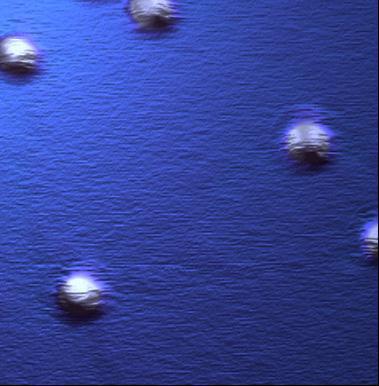What makes Q-dots interesting is that their physical properties are controlled by their small size.
Quantum dots (Q-dots) are particles whose size is limited to a few nanometers. More precisely, a Q-dot is a sphere with a radius of few nm that can confine an electron in zero-dimension; hence the name "dot". What makes Q-dots interesting is that their physical properties are controlled by their small size. In semiconductor research this has lead to novel applications in optoelectronics including fluorescence, lasing, nonlinear optical effects, and other optoelectronic applications such as ultra-fast switching.

The white particles are 30nm large Q-dots. The mono atomic terraces in the underlying surface are clearly visible and prove the quality of the measurement.

The lower image on the left hand side is a zoom into the previous image. It shows the perfectly round shape of the Q-dots.

